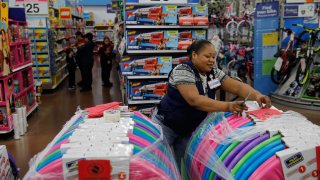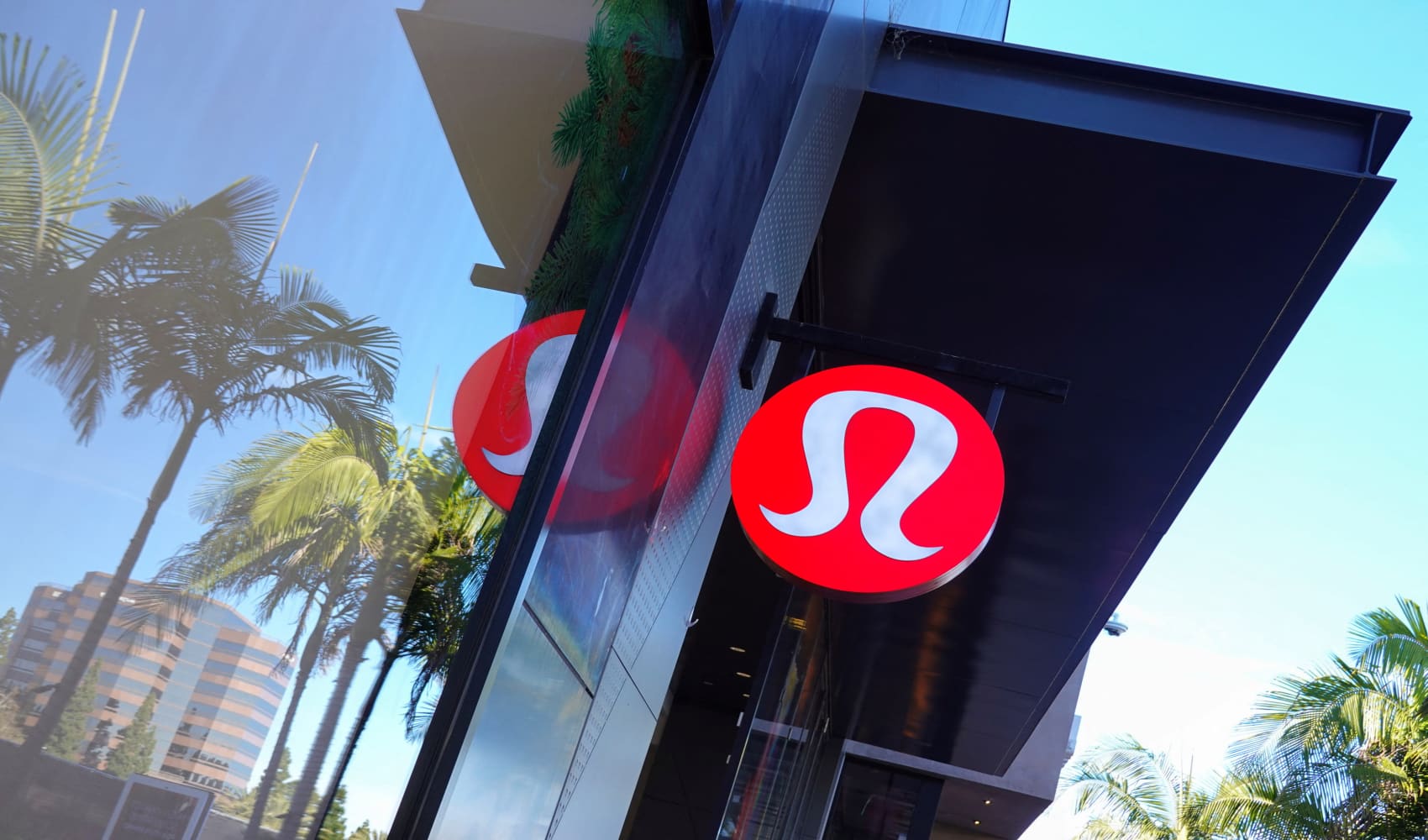
American businesses have complained for years that they can’t find the workers they need to fill available jobs. November’s robust hiring gain suggests that at least some have found a way to do so.
With the unemployment rate now at a half-century low of 3.5%, many economists have also warned that hiring would soon slow simply because there are fewer unemployed workers available.
That day may still come, but it didn’t in November. Employers added 266,000 jobs last month, the most since January. Monthly hiring has, in fact, picked up since earlier this year: It averaged 205,000 for the past three months, up from a recent low of 135,000 in July.
Friday’s jobs report largely squelched fears of a recession that had taken hold in the summer. Steady job growth has helped reassure consumers that the economy is expanding and that their jobs and incomes remain secure. That should boost spending and growth in the months ahead.
The latest numbers were welcome news, coming as President Donald Trump’s trade war with China has been weighing on the economy. Companies have cut back on their investments in plants and industrial equipment, slowing growth. But employers seem to be shrugging off those concerns, adding jobs at a solid clip. And other risks to the global economy, such as a disorderly Brexit for the U.K., have faded in the past month. Given all that, the economy could provide a boost for Trump in next year’s election.
Investors cheered the report, sending the Dow Jones industrial average up 340 points in afternoon trading.
The new job numbers were released as companies have been getting more creative about enticing workers as the ranks of the unemployed dwindle. Some are willing to hire people who are less qualified and train them, while others are raising pay to attract more applicants. Still others are offering flexible work schedules or have dropped some drug-testing requirements.
These efforts have lifted the proportion of Americans with jobs and lowered the unemployment rate by much more than many economists thought possible.
“Companies have somehow achieved continued success in luring job candidates,” said Stephen Stanley, chief economist at Amherst Pierpont Securities.
Some recruiters have overhauled their approach to hiring and retention as the competition for workers has tightened. Beth Thress, vice president of human resources at a Cincinnati-based company that owns two senior living centers, said it became harder to keep nursing aides and housekeepers once retailers such as Walmart and Target increased their pay.
U.S. & World
So Thress went to the board of Maple Knoll Communities, a nonprofit that employs 675 people, and won approval to raise starting pay to $15 an hour from $12 or $13. She also provided more flexible schedules and set up an emergency fund to help employees with temporary problems such as car maintenance or housing.
“There’s just a lot more competition, you’ve got meet their needs in some form or fashion,” she said. “It’s been a real shift in mentality.”
The changes are working so far, Thress said. The company has reduced turnover from about 40% in 2017 to just 8% so far this year.
Wages overall still aren’t growing as quickly as they have in previous expansions, but there are signs of improvement. Average hourly pay for workers, excluding managers and supervisors, which covers about 80% of the workforce, rose 3.7% in November from a year ago. That’s just a tick lower than October’s figure, which was the highest since the recession.
The higher pay is coaxing workers off the sidelines and back into the job market. The proportion of Americans in their prime working years, aged 25 through 54, with a job was 80.3% last month, matching October’s level as the highest since January 2007.
Companies are also offering bigger raises to entice potential candidates who are employed elsewhere. Workers who switched jobs saw their pay rise 4.3% from a year earlier, according to the Federal Reserve Bank of Atlanta, the biggest gain since the recession and a full percentage point higher than the pay increase for those who stayed.
Becky Frankiewicz, president of Manpower Group North America, says her organization frequently tells its corporate clients to consider loosening their job listing criteria.
“We are counseling companies to look at the requirements they set for a job and ask if they are really mandatory or just nice to have,” she said.
Frankiewicz pointed to the fact that nearly 90% of the technology jobs listed at Manpower require a college degree in computer science, but less than half the people working in the field have one.
Rebecca Hamilton, co-CEO of Badger Balm, a skincare company, said the firm’s generous pay and benefits have made it easy to fill jobs, even though it is based in a small town of 700 near Keene, New Hampshire.
“We don’t have any trouble whatsoever finding really good, talented people,” Hamilton said.
The 90-person company offers health and retirement benefits, but also an on-site gym, yoga classes and massages, and a free organic lunch every day.
Hamilton says the company, which is privately held, can afford to take such steps because of its focus is long-term, and it doesn’t have to worry about reporting quarterly profit increases.
Still, it’s not clear how long companies will be able to keep hiring at November’s blowout pace. The fact that wages gains are accelerating suggests that companies aren’t just luring in new workers, but fighting for a smaller pool of applicants.
“It’s an indication that we are starting to reach the limits of the job market,” said Joe Song, an economist at Bank of America Merrill Lynch.
The healthy job gain runs against a widespread view that businesses are struggling to find workers with unemployment so low. Persistent hiring should help keep consumers spending — a key engine of growth as businesses have cut their investment spending and exports have stalled.
Monthly job growth has in fact accelerated since this summer, averaging 205,000 over the past three months, up from just 135,000 in July.
Steady hiring has helped reassure consumers that the economy is expanding and that their jobs and incomes remain secure, which, in turn, has helped fuel spending. Consumer spending has become an even more important driver of growth because the Trump administration’s trade conflicts have reduced exports and led many businesses to cut spending.
Renewed concerns that trade will continue to hamper the U.S. economy drove stock prices lower earlier this week, after President Donald Trump said he was willing to wait until after the 2020 elections to strike a preliminary trade agreement with China. With the two sides still haggling, the administration is set to impose 15% tariffs on an additional $160 billion of Chinese imports beginning Dec. 15.
Both sides have since suggested that the negotiations are making progress, but there is still no sign of a resolution.
Hiring in the United States has remained mostly healthy this year despite the trade war. Even so, Trump’s combative use of import taxes, combined with retaliatory tariffs by China and Europe, has stalled job growth in manufacturing.
Employers have been hiring at a solid enough pace to absorb new job seekers and to potentially lower the unemployment rate, though the pace of job growth is down from last year.
The holiday shopping season has begun later this year compared with previous years, a fact that some economists think might have delayed hiring by retailers and shipping firms last month.
With tariffs hobbling manufacturing, the job market this year has underscored a bifurcation in the economy: Service industries — finance, engineering, health care and the like — have been hiring at a solid pace, while manufacturers, miners and builders have been posting weak numbers.
Despite the raging trade tensions, most analysts say they remain hopeful about the economy and the job market. The economy grew at a 2.1% annual rate in the July-September quarter, and the annual pace is thought to be slowing to roughly 1.5% to 2% in the final three months of the year — sluggish but far from recessionary.
Consumer confidence has slipped in recent months but remains at a decent level, helping boost sales of expensive purchases, such as autos and appliances.
With inflation surprisingly low, the Federal Reserve has cut its benchmark short-term interest rate three times this year. Those rate cuts have helped support the housing market. Sales of existing homes have risen nearly 5% in the past year. Sales of new homes have soared by one-third.



